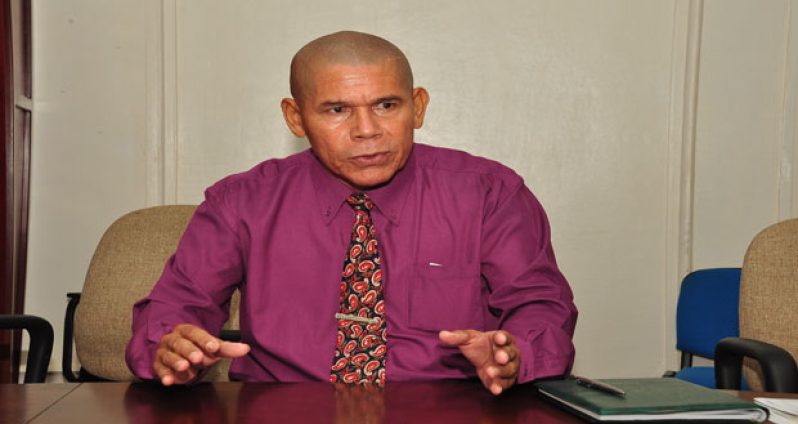WORKERS’ safety in the bauxite industry in Guyana was put under spotlight when Health Minister Dr George Norton addressed the Pan American Health Organisation (PAHO) 54th Directive Council in Washington on Wednesday.Addressing health ministers and delegates from Canada, the US, Latin America and the Caribbean, Dr Norton told the Council that air pollution in the industry exposes workers to chronic respiratory illness. “There is no doubt a need for increased training and education to sensitise all who work in the mining industry of the occupational risks and hazards. In the gold mining sector, accidental deaths among miners are frequently reported, ranging from drowning after accidents by boats piloted by unlicensed captains to being buried under loose earth as walls of excavated pits collapsed,” he said, speaking on the issue Plan of Action on Workers’ Health.
Some 25 persons here have died in 16 accidents from June 2014 to June 2015, with 18 of them dying as a direct result of pits collapsing. The “work and collect money” culture prevalent at small and medium-sized gold and diamond-mining operations leads to fatal accidents, the Guyana Gold and Diamond Miners Association (GGDMA) has said.
Government has since moved to halt the dangerous practices. “Although our Geology and Mines Commission has developed guidelines which mining operators should follow, the Ministry of Social Protection of our new government will make every effort to ensure that safety regulations are followed and protective gear made available to workers,” Minister Norton said.
In Guyana, agriculture, sugar and rice production industries are major sources of employment for many persons along the northern coast where the majority of the population reside. Bauxite mining is also a major source of employment in the coastal region while gold mining and timber exploitation are sources of employment for those in the tropical rainforest areas in the south and western regions of Guyana.
Informal sector
“Like a number of other member states in the Region, we also have a high proportion of people employed in the informal sector; those who are exposed to hazardous working conditions and those who suffer from occupational related injuries and disease. “The incidence of occupational injuries, especially among sugar cane harvesters and others in the field of agriculture is high. We have noted that in general, suicide rates are high in Guyana but apparently higher among those working in the agricultural sector, and may be associated with greater accessibility to herbicides,” Minister Norton told the Council.
More than 60 per cent of persons who commit suicide in Guyana do so by consuming a poisonous substance. The Council also heard that malaria is an epidemic here and is notably prevalent among workers in the mining and timber industries in virgin rainforest areas, where the majority of the population is of indigenous heritage.
“In our view, malaria is a work-related illness in those areas. Madame Chair, ensuring workers’ safety is a high priority for our government and therefore we support the proposed resolution on the Plan of Action on Workers’ Health, CD54/10 as we are convinced that the proposed strategic lines of action are all relevant and can be used in our efforts to improve workers’ health in Guyana,” Dr Norton told the esteemed gathering at the PAHO headquarters in Washington.
Document CD5410 presents the new Plan of Action on Workers’ Health for the period 2015-2025, which aims to address the current situation resulting from the challenges and changes that the world of work imposes. The new Plan of Action is consistent with the World Health Organisation (WHO) Global Plan of Action on Workers’ Health 2008-2017. It is based on the PAHO conceptual framework on health and human rights (Resolution CD50.R8 [2010]), regional guidance on the social determinants of health, the Plan of Action on Health in All Policies (Resolution CD53.R2 [2014]), the new United Nations Sustainable Development Goals, the PAHO Strategic Plan 2014-2019 (Resolution CD53.R3 [2014]), and the Strategy for Universal Access to Health and Universal Health Coverage (Resolution CD53.R14 [2014).
The plan contains strategic lines of action, and specific objectives and indicators aimed at protecting workers’ lives and promoting their health and well-being, with emphasis on workers in inequitable conditions of employment and those exposed to hazardous working conditions. It seeks to reduce occupational risks and non-communicable diseases, targeting actions in certain critical economic sectors, as well as to address access to health and universal health coverage and the social determinants related to workers’ health.



.jpg)








